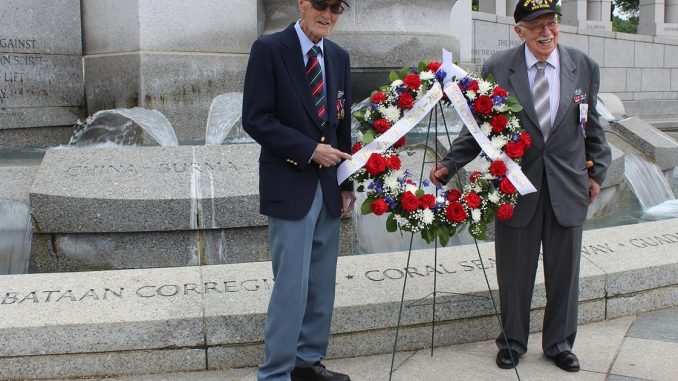
“If they can walk and carry a gun,” Major General Joseph Stillwell presciently told Brigadier General Frank Merrill in 1943, “they can fight!”
After being run out of the Burmese jungle by the Japanese in May of 1942, Stillwell had, according to one war correspondent, appeared “like the wrath of God and cursing like a fallen angel.”
The general didn’t mince his words either, telling reporters that the joint expedition between a small contingent of American, British, and Chinese troops “got a hell of a beating. We got run out of Burma and it is humiliating as hell. I think we ought to find out what caused it, go back, and retake it.”
The following year a determined Stillwell took a major step toward getting his wish, as allied leaders, many who sought to rectify the previous campaign’s novice display of jungle fighting, mapped out a plan for a ground unit trained and equipped to engage in “long-range penetration” missions.
In what was to be the forerunner for today’s special forces units, 3,000 American men volunteered for the newly formed 5307th Composite Unit (Provisional) — code name: Galahad.
Dubbed Merrill’s Marauders after their commander, the men were tasked with a “dangerous and hazardous mission” behind Japanese lines in Burma, where the fall of the country’s capital of Rangoon had severely threatened the Allied supply line to China.
The Marauders were tasked with cutting off Japanese communications and supply lines and pushing enemy forces north out of the town of Myitkyina, the only city with an all-weather airstrip in Northern Burma.
Although operational for only a few months, Merrill’s Marauders gained a fierce reputation for hard fighting and tenacity as the first American infantry force to see ground action in Asia.
/cloudfront-us-east-1.images.arcpublishing.com/mco/W5RIOPUOT5E4LNSBNNCAUDDD3U.jpg)
That reputation was recognized once more Sept. 22, when Congress passed the Merrill’s Marauders Congressional Gold Medal Act, awarding the eight surviving members of the unit with Congressional Gold Medals.
Assisting the Merrill’s Marauders Association and other various Ranger affiliations in passing the act, which was sponsored by Sen. Johnny Isakson (R-GA), was attorney Frederick R. Eames of Hunton Andrews Kurth LLP, who has fought for the past two years to gain support for the legislation.
“Highly trained infantrymen whom we regard today as heroes, such as the Special Forces, look to Merrill’s Marauders as role models,” Eames said in a press release. “The unimaginable conditions these men successfully fought through changed the understanding of the limits of human endurance in armed conflict. The Congressional Gold Medal brings them the public recognition they deserve. We are honored to have assisted in getting it across the finish line.”
Reached by email, Eames said he became involved after a colleague and fellow attorney, Scott Stone, met Marauders Bob Passanisi and Gilbert Howland in the cafeteria of the Senate Dirksen Building.
“When he found out why they were there, he immediately offered to help,” Eames said. “One of the first things he did was call us, and I agreed to get a team involved.”
For the other surviving Marauders, the acknowledgement is somewhat bittersweet.
“This recognition means so much to me and the other survivors and our families,” Passanisi, Merrill’s Marauders Association’s spokesperson, said in the release. “My one regret is that only eight of us are alive to enjoy this historic honor.”
Passanisi was luckier than most. Traversing nearly 1,000 miles behind enemy lines, the Marauders marched over some of the most treacherous terrain in the world, combating not only a determined enemy, but fighting off myriad diseases, scorching heat, venomous snakes, and bloodsucking leeches.
The exploits of the Marauders and their daring mission to recapture the vital town and airstrip at Myitkyina made headlines throughout the United States in 1944 — but at a steep cost.
After five months of combat, 95 percent of the Marauders were dead, wounded, or deemed no longer medically fit for combat. By the time the force was deactivated in August 1944, many, including Congress, wondered whether Stillwell had sacrificed the Marauders due to poor planning and his own dreams of glory and revenge.
Still, despite the unit’s staggering losses — fighting in five major battles and over 30 other engagements — the Marauders became one of the most renowned units to come out of World War II, carrying with them a legacy of bravery and the fortitude of the human spirit.
Seventy-six years later, the recognition by Congress shines “a light on that forgotten theater in the Pacific that was so crucial in defeating the Japanese,” said Gilbert Howland, a Marauder veteran.
“We did it because our country needed us.”


Be the first to comment